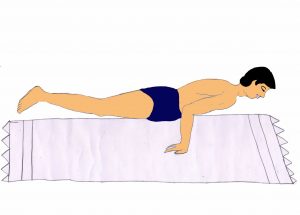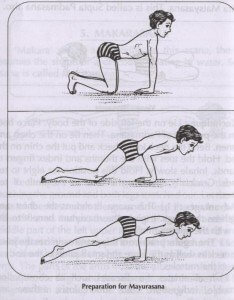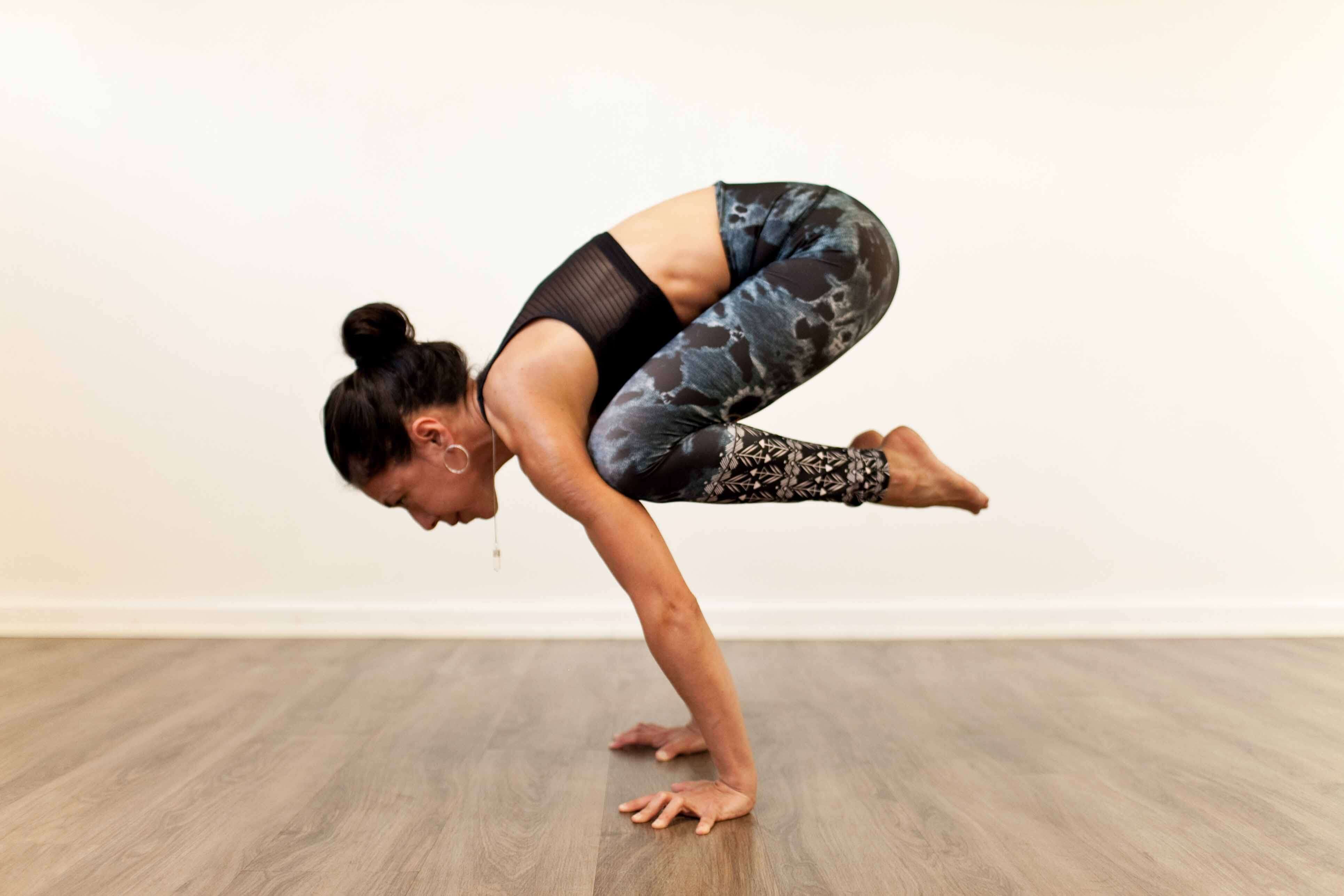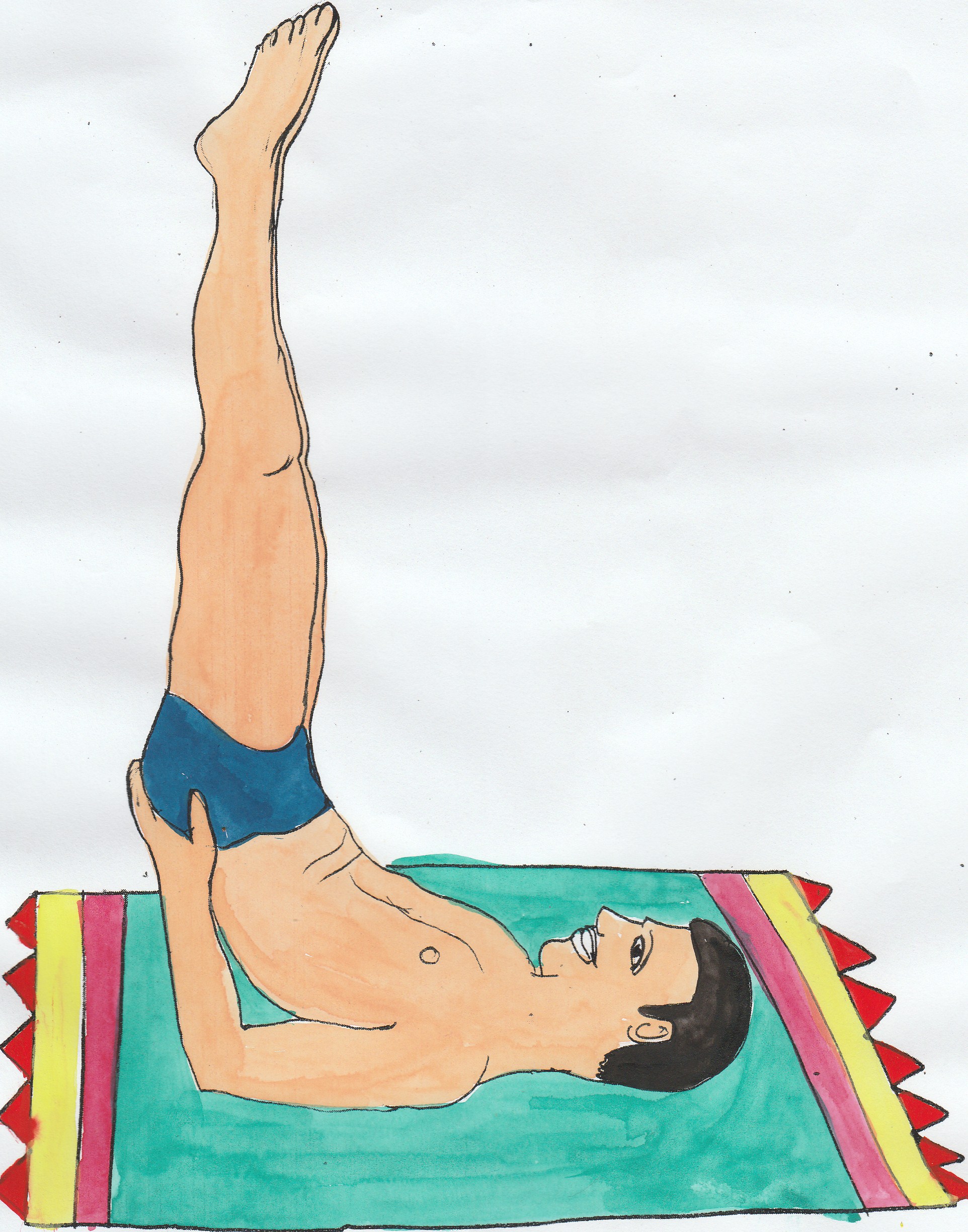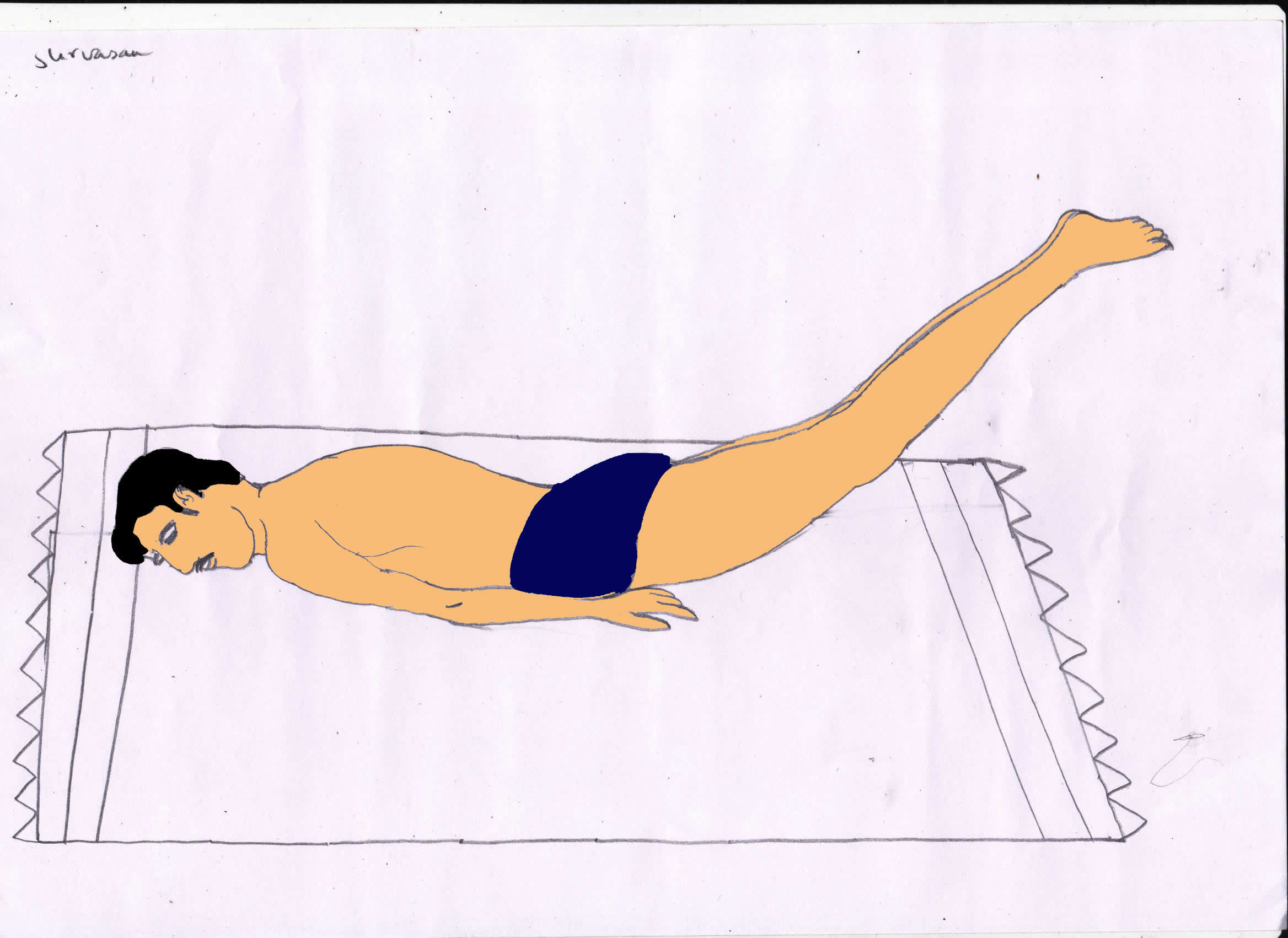Mayurasana
Mayurasana is a type of asana where you need to perform a handstand. Also known as the Peacock Pose, it is an important asana that is included in the Hatha Yoga literature. The asana ensures a lot of health benefits for the body and can be helpful when it comes to increasing youthful energy and vigor. However, the asana is somewhat complex than the other asanas. Make sure that you master all the steps carefully before you actually do this asana on a regular basis.
Steps of Mayurasana
These are the steps of Mayurasana.
- Start the pose by gently sitting on the heels. Keep your knees wide apart.
-
Keep your hands on the floor and point the fingers towards your body. Bend your elbows gently and slowly press them towards the abdomen.
-
During the pose, you should always keep the belly firm. This is something that you can do by dropping your head on the floor and enhancing the strength of your stomach.
-
Stretch out your legs while making sure that your knees remain straight. You should also keep the upper part of the feet facing the floor.
-
Keep your shoulder blades firm and push them into the back. Raise your head and tighten your buttocks. Keep your gaze forward.
-
Slowly shift the weight of your body forward while lifting the legs right off the floor. Make sure you’re your body is lifted with its weight balanced on the hands. You should keep your body parallel to the surface of the floor.
-
Stay on this pose for about ten seconds at the initial stages. With more practice, you can to hold on to the pose for up to 1 minute.
- Drop your feet and head on the ground and release the pose.
- Relax once the asana is over.
- You can repeat it 3 times.
You can also practice the alternate forms of this particular pose. One of the variations of Mayurasana is the Pincha Mayurasana or Feathered Peacock Pose.
Preparatory Poses
The main preparatory poses that you need to do Mayurasana are stated below:
- Eka Pada Sirsasana
- Chaturanga Dandasana
Follow up poses
These are the follow-up poses that you need to do after Mayurasana.
- Adho Mukha Svanasana
- Bhujapidasana
- Bālāsana
- Dwi Hasta Bhujasana
- Eka Hasta Bhujasana
- Visvamitrasana
Tips for performing Mayurasana
You must remember that Mayurasana is a form of an advanced pose. Therefore you should have sufficient knowledge and skill on other poses before you start practicing this asana. Make sure that you have strong hands, wrists, overall strength as well as control over your body. You should also have greater mental focus before you perform this asana. You should also keep your belly empty before performing this asana. Make sure that you complete your meals at least 4 to 6 hours prior to practicing this asana. Additionally, you must only practice this asana under the close supervision of a yoga teacher.
The best time to practice this asana is during the wee hours of the early morning. However, in case you are not able to do so, you can still practice it during the evening.
The science of Mayurasana
A brief look at this asana might make you think that you need tremendous arm strength to do it right. However, the most important strength that you would have to master is to learn how to work with your belly. Like any other form of arm balancing pose, you must develop incredible strength to practice it correctly. However, you should also develop patience along with strength because it is the only continuous practice that will help you to attain a relationship with the force of gravity which you must develop to perform Mayurasana successfully. In order to achieve this goal, you must develop a good yogic foundation for yourself by working on your hands, forearms, and belly. The other thing that you will have to do is learn how to consider the arms as legs and then push the elbows right into your belly. While this might get rather uncomfortable initially, with practice you can do this perfectly and benefit out of it. As you use your hands as legs for your body, you will find that your abdominal muscles effectively strengthen under the abs. Such strength is going to provide you with stability as you do the pose.
Benefits of Mayurasana
These are the main Mayurasana benefits that you should know about.
-
According to the Gheranda Samhita, Mayurasana can help in removing toxins from the body. It can detoxify the body and remove fevers and tumors.
- Mayurasana energizes the stomach, pancreas, spleen, liver, kidneys, and intestines.
-
The asana tones digestive organs and also increases blood circulation within the abdominal area, thus enhancing its strength.
-
The yoga asana tones and strengthens the reproductive system, thereby reducing all menopause and menstrual dysfunctions. Mayurasana can also enhance sexual activity.
- It can also assist in fighting piles and diabetes.
- It can help in improving posture.
- The asana helps to calm the restless mind and greatly reduce anxiety and stress.
- Practicing Mayurasana helps to boost the strength of the shoulders, wrist, elbows, and spine.
- It improves focus and concentration and also the coordination between mind and body.
Precautions and contraindications associated with Mayurasana
The following are the precautions and contraindications related to the practice of Mayurasana.
- Do not practice Mayurasana if you already have a wrist, elbow or shoulder injury.
-
You should strictly avoid Mayurasana if you have high blood pressure; heart diseases; intestinal problems; a hernia; eye, nose and ear infections or brain tumor.
- Pregnant and menstruating women should not practice Mayurasana.
- If you are not feeling well while practicing Mayurasana, immediately come out of the pose.
Now that you have learned about the various steps associated with Mayurasana, go ahead and practice it to attain the maximum benefits.
References
Click Here
Click Here
Click Here
Click Here
Click Here
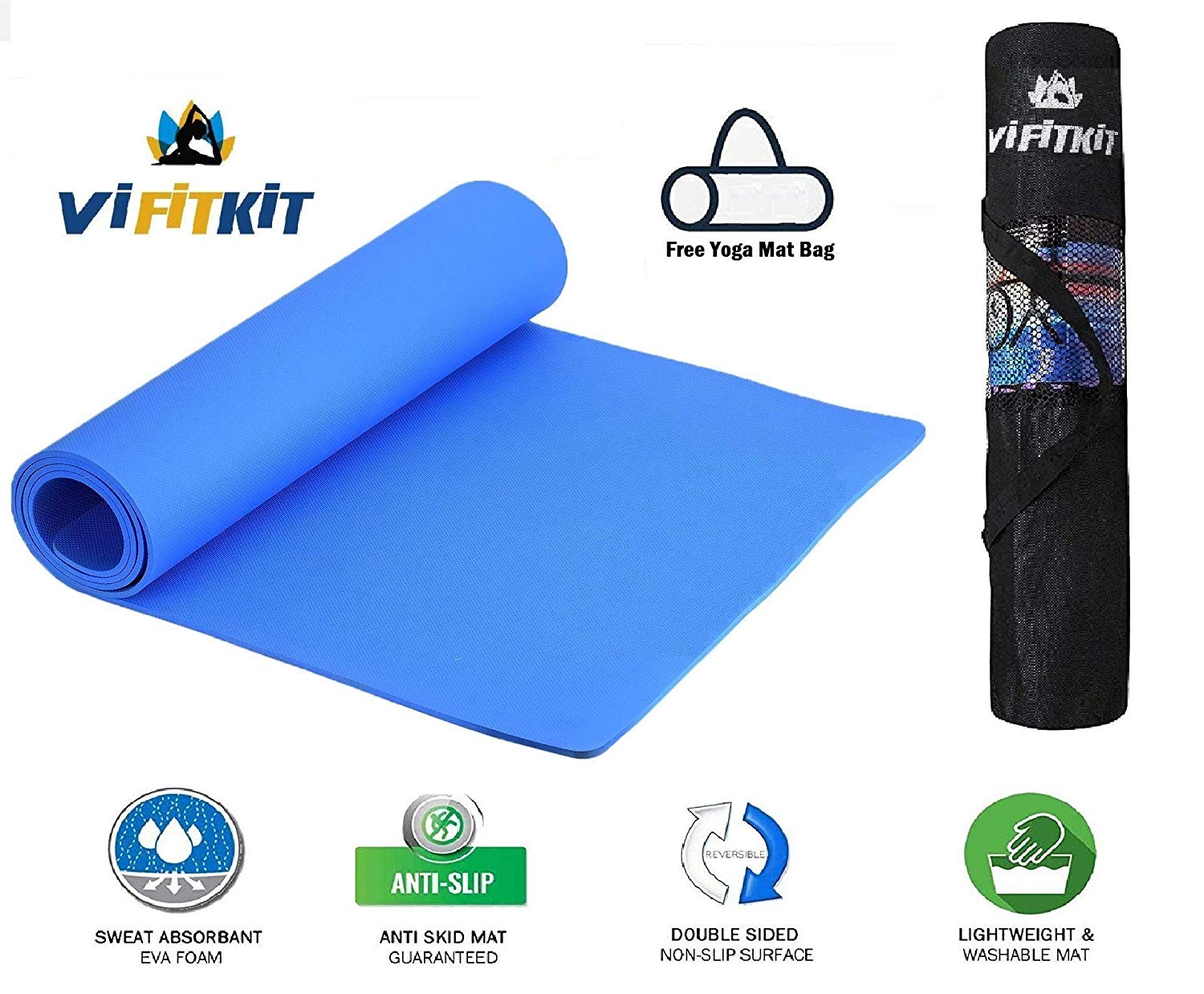
VI FITKIT Yoga Mat Anti Skid EVA Yoga mat with Bag for Gym Workout and Flooring Exercise Long Size Yoga Mat for Men and Women (Color - Blue)
Price: Rs 399.00 FREE Delivery. Details
About The Product
- With high density foam material, The thick ( 3 mm thick ) premium mat with comfort cushion spine, hips, knees and elbows on hard floors. This makes it a perfect size for both men & women.
- SWEAT RESISTANT AND WASHABLE YOGA MAT - Next time don’t stress when you sweat while doing yoga. The yoga mat is completely sweat resistant and has a Moisture resistant Technology which makes the mat easily washable with soap and water.
- This Yoga Mat is designed to give you the most comfortable yoga experience possible. The extra thick mat protects joints without compromising support or stability
- DURABLE & ECO FRIENDLY YOGA MAT - The EVA material is extremely durable and eco friendly. It lasts upto 5 times more than a regular plasticky mat! The material is biodegradable and free from PVC, silicon, latex and other toxic materials. We believe in creating quality and Eco friendly products for our customers!
- Care Tips: Do not place in washing machine or dryer, Please clean before and after using, clean regularly and keep it dry for healthy using.
